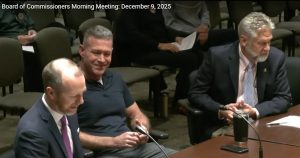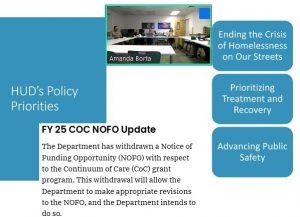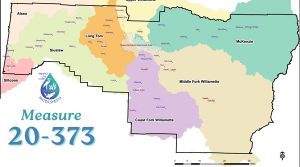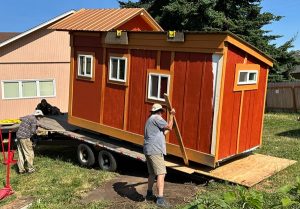The official ‘State of the City 2024’ address
16 min read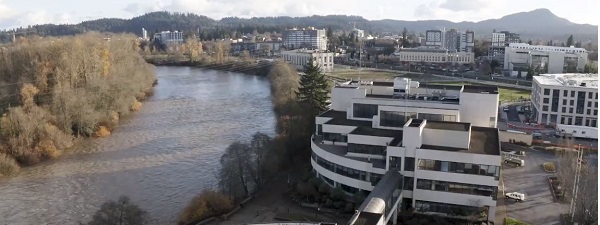
by Mayor Lucy Vinis
Welcome to the 2024 ‘State of the City!’ This is the seventh time I’ve given this address, and today marks the beginning of my final year in office. It is a moment to mark the passage of time, the work we have done, and my commitments and hopes for this final year as your mayor.
People often thank me for serving in this “thankless role.” And I reply, it is actually a thankful task. Everyday I work with councilors, city staff, and community volunteers who care about the quality of life in this city, who invest themselves as problem solvers and creative thinkers, who show up, make hard choices and learn along the way. This speech is my tribute to all of you for your perseverance, skill, hard work and good will.
The city has again produced its annual video, highlighting last year’s progress. As always, progress is incremental. We invest in solutions year after year. In addition to last year’s highlights, in the past seven years the city has accrued a long list of accomplishments. We’ve adopted plans and code changes to build bike lanes and new parks, to permit middle housing and ADUs across the city, to invest in affordable housing, to act on climate, to protect renters, to build and support a system of emergency shelters for the unhoused, and to invest in a broad public safety network. Despite the disruption of a pandemic and its economic downturn, we continue to build public and private spaces. Businesses continue to grow, and new businesses start up. People continue to move to our city because of the quality of life we enjoy.
This work of envisioning, planning and building the city we want and need takes courage. Last year in this State of the City, I called on all of us to rekindle our sense of common purpose. Our nation is deeply divided, and those divisions endanger our ability to address the full range of systemic challenges we face. We watch in dismay the rancor and dysfunction in Congress; a war in the Middle East which has emboldened white supremacists, and fostered hate crimes, antisemitism, and Islamophobia here at home; and a looming national election that we rightly worry could jeopardize our democracy again. And all the while the clock is ticking on climate change.
In the face of crisis and trauma, as we learned during the pandemic, it is too easy to pull back in cynicism and distrust. But cynicism and distrust are not options in local government—we must provide and invest in essential services. And we have to make those investments not only to meet immediate needs, but to anticipate the city of the future.
We have forged many planning documents to shape that future city, and all of those documents point in the same direction—a direction that aligns with our community’s values. We are striving for greater equity, security, and opportunity for all Eugenians. We are striving to build a community where everyone knows that they belong at the decision-making table. We are building the housing and infrastructure we need to house more people in a wider range of housing types and costs, with an energy and transportation system that will meet the future needs of our growing population and the impacts of climate change. We are building a diverse economy focused on stronger wages. And we are aiming to create a healthy community in all ways – through investments in parks and open spaces and through public safety.
I describe this work as incremental, but the trajectory is deeply rooted in what we have learned and experienced. We are not the same city we were pre-pandemic or when I took office in 2017. Our resolve to meet the known and unknown challenges of the future is deeper and stronger because of the experiences and lessons of the past few years. Our expectations of ourselves, as a city government and a community, are higher because we know that we are capable not only of overcoming obstacles, but of understanding those obstacles as a springboard for creative solutions. There is hard and exciting work ahead to build the city we envision.
Keeping that in mind, I will break this speech into three broad areas: lessons learned in 2023; priorities for 2024, and shared community values that guide this work.
What lessons did we learn in 2023 that can guide us in 2024?
Here are my top three:
- It matters who is at the table
- Success is a balancing act
- Be willing to change course
First: It matters who is at the table.
When we first crafted our Land Acknowledgement, I was clear that this should be a first step, and not a stand-alone symbolic act. The land acknowledgement is a formal statement, recognizing that our city is built on Indigenous land, acknowledging the injustice of the past, and resolving to build our future relationships with Indigenous people on a foundation of respect and recognition of their sovereignty.
Supported by the city’s Intergovernmental Tribal Relations team, in 2023, I joined staff in a series of meetings with tribal governments in our first steps to build government to government relationships with the four tribal governments who serve their members in our community. We had no agenda other than to learn, to understand, and to find areas of mutual concern and endeavor. It’s a start.
Once you open the door for a conversation – share the table with new faces and voices, you ask yourself, what took me so long? What do we have in common? How can we help each other? In what ways are we stronger together? Many of the tensions we experience in our policy discussions hinge on asking these questions and inviting diverse people to respond and help us break out of entrenched patterns.
This effort reflects our commitment to a dynamic, evolving, and more inclusive approach to conversation—and it applies to all of our public engagement efforts.
That brings me to the second lesson: Policymaking is not a zero-sum game. It’s a balancing act.
This year, council passed essential protection for renters in a merciless housing market. We heard hours of testimony by tenants and landlords. The path was not obvious; strategic choices had to be made. At its heart, this ordinance is a consumer protection policy. Tenants are vulnerable. We heard from many elderly tenants; one of whom was quoted as saying she hoped she died before the next rent increase so she wouldn’t have to live on the streets. At the same time, some landlords and property managers have concerns that these protections will unfairly and negatively impact the rental housing market. This is not a policy of winners and losers. This is an effort to find balance and some predictability for vulnerable members of our community while still offering needed discretion to landlords. Inaction is not an option – that’s what got us here. The path begins with a few steps. If it doesn’t work, we can recalibrate.
Recalibrate. That word is important, because it reflects that we are always seeking balance, and it may have to be adjusted—that we get to “better” incrementally. But if we measure our work as a one-time effort with winners and losers, we will all lose in the end because we will have lost sight of our common interests and goals.
And the third lesson of 2023: Sometimes the best course of action is to shift direction.
When you work toward long-term policy goals like climate change, you must flow like a river, moving around the boulders in the water to flow forward. Keep your eyes on the goal.
Council courageously and rightly acted this year to regulate the construction of new natural gas infrastructure. I believe we have both the responsibility and the authority to regulate where and how gas infrastructure is installed, and that this prohibition was a key step in reducing our future dependence on natural gas in housing.
This decision was immediately and loudly protested, and as you know, was destined for the November ballot with lots of industry dollars behind it. By July, it was clear that council’s position was untenable because of the 9th U.S. Circuit Court of Appeals decision against a similar ordinance in Berkeley, California.
It was a painful decision to repeal that ordinance. But it was based on a realistic assessment of the cost and barriers of implementation, as well as a recognition of the unique opportunity to shift our focus toward transitioning to clean technology, thanks to federal and state investments and policies. More on that opportunity in a moment.
These three lessons—bring the right people to the table, aim to balance and recalibrate the final decisions, and be prepared to adjust course—are valuable guides. Where do we need to apply these lessons in the coming year? What are the priorities facing us in 2024?
I have four priorities: climate, budget, public health, and city charter.
Climate is at the top of the list, and climate is a place where we can really stand to learn from the lessons of 2023.
Our Climate Action Plan 2.0, which is now better supported by state and federal action, is the guide for our actions. With more resources available, we can and must get to the steps faster and more robustly. The Climate Action Plan is built on the premise that “we’re in this together.” It incorporates actions by large public and private entities, like the school districts, UO, and EWEB, described as the Eugene Climate Collaborative, along with members of the local business community, The plan also incorporates the priorities of the Equity Panel, which recommended actions that would benefit underserved people and areas in our community.
In a meeting in September, my Blue Ribbon Business Panel pointed to the disagreement over the gas infrastructure ban as a deepening source of distrust in the business community. One of the panelists commented “When you’re not AT the table, you’re ON the table.” Despite their deep involvement in the creation of the updated Climate Action Plan, CAP 2.0, a sizable percentage of the business community was not with us when council acted to restrict the extension of natural gas into new residential low-rise construction. While council has appropriately repealed the proposed ban, we need to continue to collaborate with this important segment of our community on the work ahead.
This year, 2024, the national and state landscape has shifted in favor of a promising public conversation about next steps. A fellow mayor refers to the federal bipartisan infrastructure law and Inflation Reduction Act as “unicorn funds.” They are unique—in their scope, size and urgency. And they are pushing cities to build the capacity to make the best use of these incredible resources. The city of Eugene, because of our Climate Action Plan, is well positioned to make the most of these opportunities. Federal dollars enable us to implement at a larger scale, sooner, and faster; state policies provide the city with regulatory authority as well as dollars.
This year, staff will reach out to listen, inform, and begin to plan with both the business community and the public as a whole our best steps forward to improve the energy efficiency of buildings and advance the adoption of clean technology.
Our climate work in 2024 will be built on the lessons learned in 2023. Be sure the conversation includes people who express the full array of concerns, strive for balance across those concerns, and build in the ability to recalibrate. The goal this year will be a stronger consensus about the path forward in our response to climate. We all stand to benefit.
My second priority for 2024 is to address the budget.
Eugene is a growing community with an increasing demand for services. But the financial landscape for our city, and for other cities across the state, works against us. We don’t benefit from increases in property value because of limits imposed by Measures 5 and 50; we don’t benefit from increased income tax that exceeds projections because of the kicker. We have no general sales tax, so we incrementally create local taxes where we can – construction excise tax, marijuana tax, community safety payroll tax – and a range of fees.
A committee including councilors, budget committee members, community members and staff began discussions in December about possible ongoing sources of revenue that could strengthen our budget. A list of possibilities is coming to council for consideration early this year. The city has a long record of meeting fiscal challenges deftly; retaining essential services and, to the extent possible, softening the impact on the public. While we have strived to bring strong, diverse voices to the table, this challenge has always meant trade-offs, felt more in some sectors of our community than in others. But this time, without new revenue, the impacts will be felt very broadly.
I expect as mayor to work closely this year with other mayors and with state legislators to open the discussion about city finances based on lessons learned. We need to bring the right people to the table; to advance the issue of revenue beyond winners and losers to a more sustainable balance; and to recalibrate and shift the trajectory of our state’s tax priorities. The system established in past decades does not adequately fund city services. We have an obligation to reconsider and find a financial structure that can support us in the coming decades.
The third priority for 2024 is public health.
The city of Eugene is increasingly called upon to dedicate staff, funding and policy direction in areas that are not embedded in our charter. Public health is one such critical area.
The urgency to address health care is coming from several directions. Three key ones are: homelessness and the associated mental health and addiction crises; the impacts of pollution on neighborhood safety; and the closure of the PeaceHealth University District hospital.
Creating a healthy community is a core value and priority in city planning and public safety. But these three issues are pushing council and staff to step into this work in new ways. I will speak about each of these in turn.
Homelessness: I have long talked about housing as health care. People cannot be physically or psychologically healthy if they are unsheltered. The experience of being unhoused triggers trauma and coping mechanisms that deepen the challenges and steepen the pathway to recovery.
As you all know, within our limited resources, the city has been agile and creative in responding to this crisis, but so much remains to be done. When I took office in 2017, I promised to work for the creation of a permanent shelter. The navigation center is now well into its second year of operation. In 2017, one part-time staff person served as a liaison to homeless services. Today we have a well-coordinated team that works closely with the county and an array of private providers to run a spectrum of emergency and transitional shelters. Our programs are a model for Oregon and the country.
And yet, the flood of people pouring into homelessness continues. As we look at revenue options this year, finding a path to strategically support this ongoing work of stabilizing people without homes will be a key priority.
In my last year as mayor, I will continue to advocate for ongoing support from the state to ensure that our successful programs like the safe sleep sites continue to serve; and join mayors from across the country to advocate for federal investments. We understand that the long-term solution is housing; but we must continue to invest in emergency responses until that housing supply is expanded
Our second public health challenge is the impact of pollution on neighborhoods.
In 2023, council responded to neighborhood concerns about noise pollution, particularly industrial vibration, and soil, air and water pollution concerns related to the former JH Baxter facility in Bethel. In the first case, council had a clear pathway to amend the noise ordinance to regulate vibrations. While the city is not a health authority, we can act to reduce environmental stress. Ensuring that neighborhoods near industry are able to sleep is a practical and responsible step.
Neighbors of the JH Baxter plant in Bethel have long been subjected to noxious odors, and soil tests have discovered significant, dangerous contamination in yards. Much of the work for regulating and responding to pollution is outside of the city’s authority. As with the noise ordinance, however, council does have a path to protect public health through development standards. This is not new territory, but in the case of Bethel in particular, we recognize that earlier development patterns created this unhealthy proximity of industry to residential neighborhoods. Our goal is to avoid this in the future through increased and tightened requirements. We are a public health agency in the sense that we are responsible for zoning and building that ensures the city is a safe place to live, work and play
And our third and immediate public health concern is the loss of a hospital emergency room in Eugene. This has deep implications for public health and emergency services.
In the fall meeting of my Blue Ribbon Business Panel, this crisis elicited two questions: how do we anticipate issues on the horizon; and how might we coordinate better across jurisdictions? The panel encouraged the city to see this as an opportunity to think bigger and better about how to coordinate and collaborate with the county, the University, and other partners. Crisis is also an opportunity.
While the city’s immediate focus is on the logistics, personnel and equipment we need for providing emergency services, in the longer term, the city must work to ensure that we have the right emergency services on this side of the river.
The path is not clear; we’re learning daily about the medical sector. It’s a unique moment that will have enormous consequences for our city – a time to come together, to bring the right people into the conversation who understand the health care landscape and can help us build the health services we need.
My final and fourth priority for 2024 is related to city government itself. Our success in meeting these ongoing and emerging challenges is built on the experience and systems that came before and our willingness to think creatively. The structures as they currently exist – affecting climate, budget, and public health – need to be re-evaluated. There’s one more that we should review: the city charter itself.
Our charter is a description of the structure of our city government – and it has not been reviewed since 2002. Aspects of the charter need updating: the language itself does not reflect the city’s emphasis on inclusiveness and “a culture of belonging.” Equitable representation in elected offices is constrained by the fact that they do not pay a living wage. I am not suggesting a multi-year exhaustive process like the deep review undertaken in 2002. I hope the council will guide a charter review that is targeted and strategic to update and align changes with current practices and needs.
At the beginning of this speech, I listed three broad areas of discussion. I have spoken about lessons learned in 2023 and my priorities for 2024. Those two legs of the policy-making stool need a third for balance, and that is a commitment to acting on our shared values. The success of our future actions – in 2024 and beyond – depends on our ability not only to state our shared values, but to put them into action. I have a couple of examples of what that looks like.
In August, my Youth Advisory Council tightly gathered in a small room in the Graham Field House. The high school students had a packed agenda: swearing in new leadership, thanking their graduating president, and meeting the city’s new director for Library, Recreation, and Cultural Services. The departing YAC president, Sofia El Shamaa, is one of the founding members of YAC, which started at the end of 2020. In those three years, this group, and Sofia herself, have built an organizational structure, a shared understanding of their purpose and process, and a bench of leaders.
In this small space, new LRCS director Josh Bates, stood before the YAC. The students peppered him with hard questions: have hard experiences ever made you feel ashamed of your identity? What drives you? As direct and personal as these questions were, Josh answered frankly – and the students responded in kind, with clarity, sincerity and vulnerability.
They had created a safe space for themselves and unabashedly shared their insights, fears and humor. This is the path to meaningful participation and results from all groups in our community.
I formed the Youth Advisory Council to create an opportunity for high school students to develop their ability to engage in civic conversations. What I didn’t realize is how that space would inform my own thinking about how to have important conversations, and how to sustain a healthy curiosity about people with other life experience. The city’s new Strategic Plan emphasizes a “Culture of Belonging” as a key priority. These students and one of our executive leaders showed how that’s done.
In November, I visited both Temple Beth Israel and the Islamic Center in Eugene to express my support for both Jewish and Muslim members of our community who are struggling with grief, anger, loss, fear, and despair. After both services, members of the two congregations thanked me for serving as mayor of a city that has made them feel at home and embraced in this terrible time.
The purpose behind everything we are doing is people. The value of human life and experience must inform how we grow and improve as a community. Creating a safe space of belonging – whether that’s for a small group of students or the broader community culture – is our key task. Building housing and parks, responding to climate change, creating economic opportunity – the goal is to realize our individual and collective potential.
As a city, we face no fewer challenges than we did when I took office. Some are ongoing, some are new. But we have proven to be agile, strong, and creative in our responses. We know more today than we did seven years ago; we’ve built new programs, parks, and housing even during a time of crisis and uncertainty. We are strong. We have learned lessons about how best to make progress and to make our way toward the city we strive to be. We have learned to put into practice these disciplines: To invite and include at the table all people who have a stake; to look for balance and equity in solutions; and to reconsider our options based on knowing and listening to one another. That’s community. That’s a healthy civic life. That’s acting on shared values to build the city we need for coming generations. And that is both our legacy and our future.
Council members also shared comments, and Whole Community News encourages individuals and groups to contact us with their own versions of ‘A People’s State of the City 2024.’
